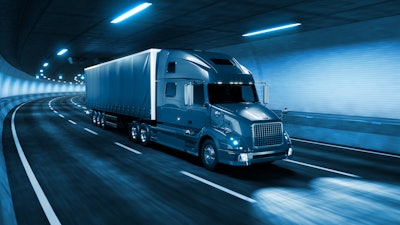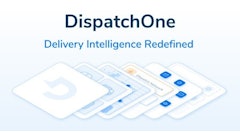
Welcome to peak moving season – the time of year when the most moves happen and bulk deliveries like furniture are more important than ever. As a result of school breaks and more predictable weather, 80% of U.S. moves take place between April and September.
While peak moving season is not unique to this year, the requirements for customer satisfaction in the last mile have changed dramatically. Shoppers now expect faster and cheaper delivery – which can cause headaches for retailers. In fact, 56% of Generation Z and Millennial shoppers ordered ecommerce products for same-day home delivery last year. As the efficiency of last mile becomes more of a priority for shoppers, it’s essential that retailers develop a positive delivery experience that creates a lasting impression.
To offer a best-in-class delivery experience this summer, retailers will need to revolutionize the last mile to stay competitive and adapt to customer concerns. This includes offering more delivery options, increasing customer control and providing greater visibility throughout the experience.
Let’s dive into the logistics behind achieving a consistently positive and memorable fulfillment reputation, despite changing customer preferences.
Offer More Delivery Options
Delivery is not one-size-fits-all. One customer may prefer the most time-efficient delivery possible, while another may prioritize being home when the carrier arrives. Therefore, retailers should strive to offer shoppers as many delivery options as possible in terms of timing, location and levels of service.
Flexible delivery options should work around the shopper’s ideal timeline. These options can include same-day delivery, scheduled delivery based on the shopper’s schedule and the opportunity to hold an item if needed.
For location preferences, retailers can offer home delivery, curbside pickup at nearby warehouses or store pickup at the shopper’s location of choice. Finally, retailers should also consider offering in-home set up or delivery that goes beyond the front door to optimize the experience for larger items like furniture.
These are just a few opportunities retailers have to impress shoppers with simplified delivery experiences. What’s more, as retailers learn about each shopper’s preferences, emails and product pages can be personalized to increase engagement. For example, if a shopper often uses curbside pickup, the retailer can highlight which products are available in their preferred store location on the product page. By removing potential roadblocks and helping shoppers get what they want where and when they want it, retailers can win over shoppers for the long run.
Give Customers More Control
The consumer’s choices shouldn’t end with the delivery method. Shoppers should have the opportunity to express other priorities for the last mile, including sustainable preferences. The last mile typically involves excessive vehicle emissions and packaging. Yet, retailers and brands can partner with last mile delivery and packaging companies that strive to minimize their harmful effects on the planet. Similarly, shoppers should have the ability to choose how many packages their items come in or how many different trips their deliveries should arrive in. For example, Amazon enables shoppers to choose one day to receive all their packages across multiple orders to reduce emissions.
Sustainability is just one example of how retailers can take customer preferences into account and showcase shared values with their community. As a result, shoppers will feel better connected to the retailer and be open to devoting more loyalty.
Provide Greater Visibility During Deliveries
The confirmation email should not be the last update a shopper receives from a retailer, even if everything is running smoothly. After an order has been placed and delivery preferences have been selected, consumers should be kept in the loop with updates that suit their needs. For example, if the shopper selected home delivery, they should be given a specific arrival window as the delivery day draws closer. Similarly, if a shopper chose in-store or curbside pickup with an arrival window but the item can be delivered sooner, the retailer should offer them the opportunity to opt for the earlier time.
On the contrary, sometimes fulfillment hiccups do occur and retailers can no longer meet the delivery timeline the customer selected. In these scenarios, it’s critical that the customer is kept in the loop and given as much control as possible. If a delivery must be delayed, the shopper should be given the chance to adjust the new delivery window or method. In addition, if a fulfillment experience does go sour, the retailer should consider offering refunds for shipping fees or incentives for future purchases. This extra step will help the shopper feel valued by the retailer, despite the unexpected and potentially unpleasant change in plans.
Winning in the Last Mile
Now is the perfect time for retailers to invest in their delivery experiences. As the number of home moves increase and the warm weather inspires new purchases, companies must strive to offer uniquely efficient and effective last mile experiences. By incorporating these best practices, brands and retailers will leave lasting impressions, stand out among the competition and earn a larger share of customer loyalty for summers to come.
![Pros To Know 2026 [color]](https://img.sdcexec.com/mindful/acbm/workspaces/default/uploads/2025/08/prostoknow-2026-color.mduFvhpgMk.png?auto=format%2Ccompress&bg=fff&fill-color=fff&fit=fill&h=100&q=70&w=100)








![Pros To Know 2026 [color]](https://img.sdcexec.com/mindful/acbm/workspaces/default/uploads/2025/08/prostoknow-2026-color.mduFvhpgMk.png?ar=16%3A9&auto=format%2Ccompress&bg=fff&fill-color=fff&fit=fill&h=135&q=70&w=240)







